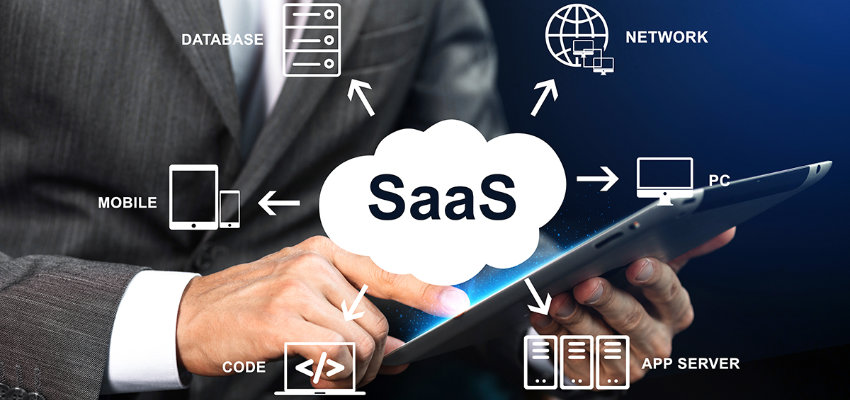Show:
SaaS Integration and Interoperability: Building a Seamless Ecosystem
Did you know the global SaaS market is projected to reach $623 billion by 2023? With SaaS platforms mushrooming in every vertical, from e-commerce and healthcare to marketing and HR, it’s no longer a question of “if” but “how” to integrate these solutions effectively. We’re in an era where data is the backbone of decision-making, and a disjointed tech stack can be as paralyzing as a spinal injury.

Imagine a world where all your SaaS applications talk to each other like old friends, exchanging data without manual intervention. Sounds idealistic. But that’s what the goal of SaaS integration and interoperability is—creating a seamless ecosystem where software solutions harmonize to supercharge your business processes.
In this blog, we’ll delve into the nuts and bolts of SaaS integration and why interoperability is not just a buzzword but a business imperative.
The Significance of SaaS Integration
So, why is everyone talking about SaaS integration? Think of it like this: You’ve got all these excellent tools, but you’re missing out if they’re not talking to each other. It’s like having a smartphone but not using the Internet—you don’t get the full benefit.
SaaS integration is about making your tools work together so your business can run smoothly. It’s a big deal because it saves time, reduces errors, and lets you focus on growing your business.
- Exploring The Role of SaaS Applications in Contemporary Business Operations
In today’s fast-paced world, businesses are like engines that need the right fuel to run efficiently. That’s where SaaS applications come in. They’re like the supercharged gas that helps your business engine roar.

SaaS applications do everything from managing your emails and calendars to handling complex data analytics. Even more remarkable is how easily they can be accessed from anywhere. All you need is a good internet connection, and you’re set.In the age of online work, enterprises have started relying on SaaS for legal process management as well
The impact of SaaS on business is enormous. It levels the playing field. Even small businesses can afford sophisticated tools, such as Centus website localization software, that were once only in reach for big corporations. These tools are often updated automatically, meaning you always have the latest and most significant features without lifting a finger.
But the real magic happens when you start integrating these SaaS applications. When they work together, you get to see the different ways SaaS can help. You can have your marketing software talk to your sales platform so you know exactly which strategies are turning into dollars.
Connect your accounting software to your e-commerce platform for real-time updates. The point is SaaS applications aren’t just convenient; they’re game-changers that redefine how modern businesses operate.
- Challenges Posed by Disconnected Software Systems and Their Impact
If your software systems aren’t talking to each other, you’re setting up hurdles in your race. Here’s what that chaos looks like.
You’ve got your data all over the place. It’s like having your favorite snacks scattered in different rooms. You must move around a lot if you want a bite of everything. In business terms, that’s time and effort wasted pulling data from different corners to make sense of things.
Consider your team as drivers in a relay race, each using a different car. Switching between cars slows down the whole race. In the workplace, if your team has to use different systems for different tasks, you can bet they’re losing time—and patience.
You’ve got to consider security. If each software is like a different room in your house, not all rooms have equally strong locks. Some might be easy to break into, putting your whole house at risk. Similarly, with software, a weak link can be a backdoor for security threats.
Benefits of Interoperability

Interoperability is like having a magical remote that connects all your gadgets. When your software systems sync up, good things happen. You save time, make better decisions, and keep your data safe. Let’s dive into why this is a game-changer for your business.
- Enhanced Data Flow and Real-Time Information Exchange
Having software that talks to each other is like having all your apps in one super-app. It makes life more accessible, and here’s why. Think of data as text messages. If all your friends are in the same chat group, you can send one message, and everyone gets it. That’s what connecting your software does. Data—like who bought what or what task is due when—gets to where it needs to go, no fuss. You’re not copying and pasting info from one app to another. It’s like group texting for your business data.
Let’s talk about real-time updates. Imagine a live sports score ticker for your business. You see what’s happening the moment it happens. It’s not yesterday’s news; it’s right now. Your team sees it, too, so everyone knows the game plan.
- Improved Decision-Making Through Unified Insights from Diverse SaaS Tools
When your software tools are in sync, it’s like having a super-smart advisor who takes in all the facts and gives you the best advice. You make smarter choices faster. Here’s how it works.
Imagine your different software tools are like pieces of a puzzle. One has sales data, another has customer feedback, and another tracks your inventory. When these puzzle pieces fit together, you see the whole picture. You’re not guessing or trying to connect dots that are miles apart. Everything’s right there in front of you.
So, sales are down in one area, but customer satisfaction is high. When you can see that info side-by-side, instantly, you might figure out that you’re onto a winning product that needs a little marketing boost. You don’t have to go on a data scavenger hunt to make that decision.
Syncing your software tools helps everyone make better decisions because you’re all looking at the same complete picture. That’s not just smart; it’s essential.
- Streamlined Processes and Increased Operational Efficiency
When your software tools work together, it’s like assembling a dream team where everyone knows their role and nails it. Things get done faster and better. Let’s break it down.
Think of your daily tasks as a to-do list. Usually, you might have to run to the post office, the grocery store, and then back home to cook. But what if all those places were in the same building? You’d get everything done in half the time. That’s what integrated software does. It puts everything you need in one place to zip through tasks.
It’s not just you, either. Your whole team gets the benefit. Imagine how much more can be done if everyone has the same super-efficient setup. It’s like cooking a big meal, but everyone in the family helps. Dishes get done, the table’s set, and the food’s ready faster because everyone’s working together smoothly.
What’s the big win here? You save time, reduce stress, and everything runs like a machine. When tasks are simplified, and data is easy to find, your team can focus on the good stuff—like nailing that next big project or wowing a client. Efficiency isn’t just a buzzword; it’s your new reality.
Strategies for Achieving SaaS Integration

Ready to make your software tools play nice with each other? A well-executed SaaS integration strategy is like having the ultimate game plan for a winning season. Let’s delve into practical steps that set you on the path to smoother operations and better decision-making.
- APIs and Webhooks: Leveraging APIs and Webhooks for Data Communication
Think of APIs and webhooks as your business’s super-friendly mail carriers. They don’t just deliver the letters; they ensure the right person gets them at the right time. Let’s investigate why these tools are your go-to for making software buddies.
APIs are like scheduled mail deliveries. They ensure that your software tools exchange information at regular intervals. It’s like getting your monthly magazine subscription; you know it’s coming, and you know what to expect.
Webhooks are even more incredible. They’re like having a mail carrier that shows up the second something important happens. Say your online store makes a sale. A webhook can instantly tell your inventory system to update. No waiting, no delays—it’s real-time action.
Now, why does this matter? Because when your data flows this smoothly, everything else falls into place. Your sales team knows what’s in stock, your customer service knows what clients are asking about, and your managers get up-to-the-minute reports.
So, if you want your different software tools to get along, APIs and webhooks are the friend-makers you need. They help your whole operation run like clockwork, keeping everyone informed and efficient. It’s teamwork at its digital best.
- Middleware Solutions: Implementing Middleware for Bridging Different SaaS Platforms
Middleware is like the ultimate translator at a global conference. No matter what language your different software tools speak, middleware ensures everyone understands each other.
Here it works: Middleware sits in the middle and sorts out the messages between different tools like ControlHippo. So, if a customer buys something, the middleware tells your inventory software to update the stock numbers. Easy as that.
It allows all your software to work together, even if they’re as different as apples and oranges. That means you can pick the best tool for each job without worrying about whether they’ll get along. It’s like enjoying both baseball and soccer matches because you understand both.
Middleware eliminates the headache of making sure all your software can talk to each other. It’s the go-between that keeps everything running smoothly, freeing you up to focus on the big picture.
- Data Mapping and Transformation: Ensuring Seamless Data Translation Between Systems
Data mapping and transformation are crucial because they make your different software tools ‘speak the same language.’ Imagine if one part of your business stores dates in MM/DD/YY format and another uses DD/MM/YY. It sounds small, but mix those up, and you’re looking at some real headaches.
Data mapping is your guide, pinpointing exactly where each piece of information should go in the new system. It’s like having a well-organized file cabinet where everything has its place, making it quicker and easier to find what you need.
On the other hand, data transformation is about converting the format of that information, ensuring it fits into its new ‘home.’ For example, if one system calculates tax within a total price and another keeps it separate, the transformation ensures it all lines up.
These processes save you time and avoid mix-ups. Your team can instantly use and trust the data they see, no matter which system it came from. And when decisions are made faster and with confidence, your business runs smoother. There’s no wasted time in translation, making you more efficient and effective.
Overcoming Integration Challenges

So you’re pumped about integrating your software, but you’ve hit some bumps in the road? Don’t sweat it. Every challenge has a solution, and we’re here to guide you through them. Let’s roll up our sleeves and tackle these obstacles to make your SaaS ecosystem rock solid.
- Data Security and Privacy: Addressing Concerns Related to Data Protection During Integration
Data security and privacy are like the VIP bouncers at your company’s exclusive party. They ensure only the right people get in and everyone behaves inside. So, how do you keep things secure while juggling different software tools? Let’s get into it.
Always check the security credentials of any software you bring into the mix. Think of it like checking IDs at the door. Make sure they meet industry standards for security and privacy. Trustworthy software is the first step in avoiding a data breach disaster.
Now, encrypt your data. Encryption scrambles your information into a code only someone with the right ‘key’ can read. It’s like having a secret handshake for your data. Even if someone crashes the party, they can’t understand the inside conversations.
Always keep an eye on who has access to what. Role-based permissions help you control who can see and do what within your software systems. It’s like giving VIP badges to the trusted members of your team.
You can integrate your software tools without losing sleep over data security and privacy. With careful planning and robust security measures, your data will remain safe and easy for your team to access and use. Keep your party secure and enjoyable—that’s the name of the game.
- Compatibility Issues: Dealing with Variations in Data Formats and Structures
Regarding integrating different software tools, compatibility can be a sticking point. First, identify the differences. Each software has its unique way of storing and displaying data. Some people prefer calendars, while others swear by old-school planners. Know the formats each tool uses so you can plan how to bridge the gap.
Now, bring in the fixers. If you’ve already got an IT team, they’re your go-to for this. They can either manually reformat the data or use special software that does the job. It’s like having a translator who’s fluent in many languages.
Sometimes, you might need to compromise. You may not be the perfect fit, but you can get close enough. It’s okay to tweak your expectations as long as the core function remains intact, like settling for a phone call when a face-to-face meeting isn’t possible.
The point is compatibility issues aren’t roadblocks; they’re just bumps in the road. With careful planning and some tech magic, you can get all your tools singing the same tune. You can even think about hiring a software developer to help you with task. Then, it’s smooth sailing—or should we say, smooth integrating—from there.
- Scalability: Ensuring the Integration Solution Can Accommodate Future Growth
Planning for growth is like buying a pair of shoes for a kid—you don’t want them to outgrow it in a few months, right? The same goes for integrating your SaaS tools. You want a solution that fits not just today but also as your company expands.
Start by picking software that’s known for its scalability. These are usually cloud-based solutions that can easily handle more users or data when needed. Think of it like a stretchy pair of pants; they’ll fit you comfortably now and have room for Thanksgiving dinner.
Consider the cost of scaling up. Just like you would only buy something by checking its price tag, be aware of any additional costs for adding more users or features. Knowing this upfront lets you budget for the future and avoid nasty surprises.
Preparing for scalability isn’t just smart—it’s essential. Investing time and thought now saves you from future headaches, ensuring your systems can grow gracefully along with your business. Choose wisely now, and you’ll make your future self very happy.
Related Questions
- What Exactly is SaaS Integration?
SaaS Integration is like the glue that holds different software applications together. It allows them to communicate and share data, streamlining your business processes.
2. Do I Need an Expert to Handle Integration?
While having an IT pro helps, many modern tools are user-friendly. Think of it like assembling a piece of furniture: sometimes you can do it yourself, but an expert’s hand can be invaluable for intricate setups.
3. How Much Will Integration Set Me Back Financially?
Costs can range widely. It’s similar to dining out; you can find options that fit a tighter budget or go all out for a five-star experience. Always consider both upfront and ongoing costs.
4. Is My Data Secure During and After Integration?
Yes, but it’s crucial to choose platforms with solid security measures. Think of it as choosing a safe car; you want airbags and good brakes, not just a pretty exterior.
5. Can My Integration Setup Scale as My Business Grows?
Absolutely, but you’ll want to opt for scalable solutions. It’s like planting a tree; make sure there’s enough space to grow tall and wide.
6. What’s the ROI on SaaS Integration?
ROI can be significant but varies depending on your needs. It’s like a gym membership; the value you get depends on how effectively you use the facilities.
Conclusion
SaaS integration is a big deal because it helps all your different software get along. Imagine having one remote control for all your devices; that’s how simple life gets. We talked about the bumps you might hit like different systems not playing nice together or worrying about your data safety. But don’t sweat it—there are ways to fix these issues.
You’ve also got options for making this work, whether using APIs or other fancy tech stuff. And the best part? It’s all doable, even if you’re not a computer whiz. The goal here is to make your work life easier and more efficient. It’s like cleaning out your garage; it takes effort but is worth it.

 Return to Previous Page
Return to Previous Page








